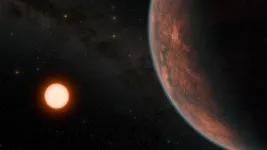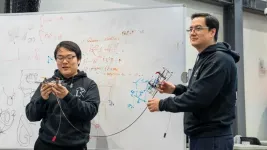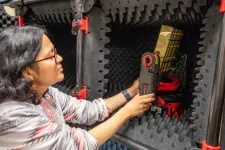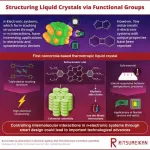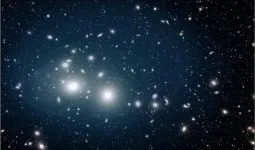(Press-News.org) The discovery of a planet similar to Venus around a star in the neighborhood of the Solar System raises hopes that astronomers may someday unlock the secret to why life appeared on Earth.
The study of life in the Universe is difficult because we have only one example of a planet where life has been confirmed: Earth. It is difficult to say which characteristics of Earth are required for life to appear, and which are irrelevant. Until we find an “Earth twin” where the conditions for life also appeared, the best astronomers can do is study “evil twins,” planets with initial conditions similar to Earth that turned out very differently, with environments unsuitable for life.
In the Solar System, Venus and Mars provide two examples of lifeless “evil twins.” But with only two examples, there is still much uncertainty about how stringent or lax the conditions for life may be. Since the 1990s, more than 5,500 planets orbiting around stars other than the Sun have been discovered. However most of these planets are hundreds of light years away from Earth, making it challenging to study them in detail.
In this research, the team found and characterized a new planet, called Gliese 12 b, based on data from NASA’s TESS space telescope; the MuSCAT2 and MuSCAT3 cameras, which were developed by the Astrobiology Center (ABC) in Japan and the University of Tokyo; and the Subaru Telescope of the National Astronomical Observatory of Japan. Gliese 12 b is close to the Solar System, being located only 40 light-years away in the direction of the concentration Pisces. This makes Gliese 12 b an ideal target to study with NASA’s James Web Space Telescope and future 30-m class telescopes.
So far, the international team led by scientists from the Astrobiology Center in Japan, the University of Tokyo, the National Astronomical Observatory of Japan, and Tokyo Institute of Technology has figured out that Gliese 12 b has on orbital period, that is to say one year on the planet, of only 12.8 days. The planet has a radius that is only 4% smaller than Earth’s radius, and is less than 3.9 times the mass of Earth. Gliese 12 b receives 1.6 times more radiation from its host star than Earth receives from the Sun. For comparison, Venus receives 1.9 times more radiation than Earth.
Based on this data, the team believes that Gliese 12 b is an “evil twin,” more like Venus than like Earth. But they cannot rule out the possibility that Gliese 12 b is an “Earth twin” with liquid water on its surface. Further observations will determine if Gliese 12 b is an “evil twin” or an “Earth twin.” In either case, study of Gliese 12 b will give us a better idea of the prerequisites for a life-friendly environment to appear on a planet.
END
Earth twin or evil twin
2024-05-23
ELSE PRESS RELEASES FROM THIS DATE:
Tracking down the genetic causes of lupus to personalize treatment
2024-05-23
Lupus is a lifelong, often painful and occasionally lethal autoimmune disease. Few treatments exist today beyond powerful steroids to knock down a patient's immune system — a therapy that has its own serious risks.
The good news is that new and promising treatments are in clinical trials. But the term lupus belies the fact that the disease has a variety of causes, which means that treatments will have to be highly personalized to guarantee that each patient is given the drug that targets the specific genetic mutation ...
New discoveries about the nature of light could improve methods for heating fusion plasma
2024-05-23
Both literally and figuratively, light pervades the world. It banishes darkness, conveys telecommunications signals between continents and makes visible the invisible, from faraway galaxies to the smallest bacterium. Light can also help heat the plasma within ring-shaped devices known as tokamaks as scientists worldwide strive to harness the fusion process to generate green electricity.
Now, scientists have made discoveries about light particles known as photons that could aid the quest for fusion ...
Lehigh University researchers explore innovative cable-based approach to aerial robotics
2024-05-23
When we think about drones, we tend to think about Amazon. But their potential is much greater, and arguably far more important, than dropping off a box of laundry pods by lunchtime (an idea that’s struggled to take off since Jeff Bezos floated it more than a decade ago).
Aerial robots could be a huge asset, saving time, money, and workers’ well-being, in industries like construction where humans often have to heft materials up multiple floors, says David Saldaña, an assistant professor of computer science and engineering. They could also deliver ...
Researcher charges ahead with new tech to power drones wirelessly
2024-05-23
Dr. Ifana Mahbub, assistant professor of electrical and computer engineering at The University of Texas at Dallas, has been awarded the Defense Advanced Research Projects Agency (DARPA) Director’s Fellowship to continue her research to develop wireless technology to recharge unmanned aerial vehicles (UAVs) in flight.
DARPA awards the fellowships to its Young Faculty Award recipients who demonstrate exceptional performance. Mahbub received a Young Faculty Award, which provided $500,000 over ...
Features of bloodstream infection among immunocompromised oncology patients presenting to the emergency department with fever
2024-05-23
Background and Aims
Oncology patients undergoing cancer treatment and experiencing episodes of fever are known to be at increased risk for invasive bacterial infection, including bloodstream infection. This study aimed to identify the incidence of bacteremia along with the bloodstream isolates for immunocompromised oncology patients referred to the emergency department (ED) due to fever.
Methods
Oncology patients with fever were referred to the ED according to a protocol previously reported. Virtually ...
How family economic insecurity can hurt child mental health
2024-05-23
COLUMBUS, Ohio – Economic difficulty caused by the COVID-19 pandemic led to a cascade of connected problems for some parents – resulting in mental health problems for their children, a new study suggests.
Researchers found that economic insecurity was linked to higher levels of depressive symptoms for parents, which was then associated with poorer relationship quality for the couples. That was linked with more harsh parenting and then to increased internalizing behaviors for their children.
“Pandemic-induced ...
Constantly on the hunt for food: Harbor porpoises more vulnerable than previously thought to the disturbances from humans
2024-05-23
Summer is coming and that means more boats in the sea. Danish coastal waters are especially cluttered with small boats in the summertime. Locals water skiing, going fishing or just riding around the beautiful bays and fjords.
In general people relax and have a good time on the water, but that is unfortunately not the case for the harbor porpoise.
The more motor boats speeding noisily around, the more they are disturbed. And that can be a big problem for the animals.
Because the harbor porpoise is a relatively large animal that feeds on small fish it needs to spend a lot of time hunting. New research shows that it spends around 60 percent of its time on the hunt, but ...
Producing novel liquid crystals by stacking antiaromatic units
2024-05-23
In organic chemistry, π-stacking systems are supramolecular structures that arise due to the dispersion force, a type of intermolecular noncovalent interaction. They are a common occurrence in nature; the stabilized structure of DNA is a very prominent example of a π-stacking system, and so are the arrangement of amino acids in certain proteins. Interestingly, π-stacking can be leveraged in the design of materials with useful electronic and optical properties. These include organic semiconductors of various kinds, as well as conjugated polymers for sensing and biomedical applications.
Thus far, a good portion of technologically relevant π-stacking system has been limited ...
First pictures from Euclid satellite reveal billions of orphan stars
2024-05-23
The first scientific pictures from the Euclid satellite mission have revealed more than 1,500 billion orphan stars scattered throughout the Perseus cluster of galaxies.
Led by astronomers from the University of Nottingham, this discovery sheds light on the origins of these celestial wanderers.
The Perseus cluster, located 240 million light-years away from Earth, is one of the Universe's most massive structures, boasting thousands of galaxies. However, amidst this cosmic ensemble, the Euclid satellite captured faint ghostly light - the orphan stars - drifting between the cluster's galaxies.
Stars naturally form within galaxies, so the presence of orphan ...
VIDEO: Surrey astrophysicists explore new galaxies and streams of stars using new data from Euclid space telescope
2024-05-23
As the European Space Agency publishes the first findings from its Euclid space telescope, scientists from the University of Surrey are celebrating fresh insights from the data.
Dr Denis Erkal, Associate Professor of Astrophysics at the University of Surrey, studies how the gravity of the Milky Way pulls clusters of stars apart, creating streams of stars trailing across the galaxy.
Now, his model for how this happens (video HERE) has been confirmed by data from Euclid.
Dr Erkal said:
“For a long time, my modelling ...
